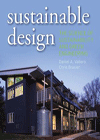Voss says the project marked less of a turning point than another step in the firm's—and in a way, the industry's—evolution. "We've been trying to figure out how to deal with waste for 20 years," he says. "Sustainability isn't a fad. I'm not sure how much credit we can take for what we've accomplished."
He does, however, single out Lehman, who became interested in sustainable design while attending the Milwaukee School of Engineering and Construction. Her first hands-on experience with the concept occurred in 1998, while she was working as a college intern with Appleton, Wis.-based designer and contractor Hoffman.
"My job was to research and evaluate sustainable materials for its new corporate headquarters," says Lehman. "Back then, those materials technically didn't exist."
A few years later, while employed by another contractor in the region, "I was asked to select a sustainability rating system I thought would have legs," adds Lehman."The firm was building a new headquarters, and the president wanted to integrate sustainable components into the design after having seen them in use in Europe."
The rating system she selected was LEED. Since then, the two have been inseparable. Lehman currently is a member of USGBC's LEED Core Curriculum Committee, Wisconsin's only USGBC LEED faculty member and a veteran of more than 60 LEED-certified projects.
"She's No. 1 in our industry," says Voss. "She knows the business and talks the business in a way that really resonates. People get it."
That includes members of Miron's staff. "All of our project managers are LEED accredited for the simple reason that every project of ours touches on some aspect of sustainability, even those that aren't seeking LEED certification," says Voss.
"We started out with only two LEED APs on staff, and one of them was me," says Lehman. By 2008 construction in the region was plummeting. Government clients, meantime, had begun placing greater emphasis on sustainability. Miron ramped up its efforts. "We went from two LEED APs to 50," says Lehman.
One of its first significant sustainable projects, a Time Warner Operations Center in Appleton, didn't begin that way. "They told us they wouldn't be seeking LEED certification, but top company executives later stepped in and said, 'Oh, yes, you will,'" says Lehman. "By then, the foundation was in the ground and mechanical, electrical and glazing components had all been ordered. That became a LEED pilot project for them. They've taken the same approach at locations across the country."
Miron quickly impressed other potential clients in the region. "I think sustainability-oriented clients are pretty savvy," says Lehman. "They can distinguish between greenwashing and reality."









